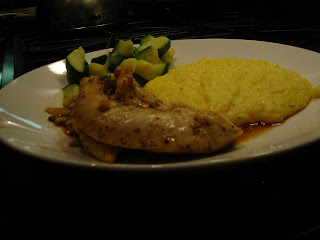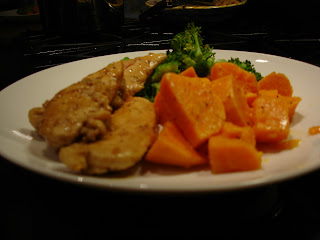Every year in the Fall many of my friends and family get together to make Mole Poblano – a recipe of Luis’ mother. If you are not familiar with mole, it is a pungent sauce used in Mexico for meats and fish; this version contains chocolate and several varieties of red chiles – plus a whole lot more. There are numerous varieties of mole using different chiles, different nuts and tweaking all kinds of ingredients. This version is wonderful with roast poultry, chicken enchiladas, and pork. It also adds complexity to chiles or sauces for tamales. The version we make isn't spicy and the flavor of chiles and other ingredients is wonderfully balanced.
The process is time consuming; with all the ingredients in hand it can take you six hours to make this. However, it makes the perfect gift and keeps well so you can have a supply through the year. The portions of the ingredients are based on estimates while my mother-in-law was cooking. She is flexible with the ingredients changing portions as dictated by availability of certain ones. For example, chiles below are for heat and color - if you want more heat add more guajillos, negros and mulato chiles.
The following dried chiles (any of the below can be replaced by its powder form although I don't have a conversion for that);
3 chile negros
10 chiles california
10 chiles anchos
5 chiles mulatos
7 chile pasillas
5 chile guajillos
The following nuts, seeds and other dried ingredients:
1 cup almonds
1 cup pecans or walnuts
1 cup peanuts
1/2 cup pumpkin seeds
2 cups sesame seeds
1/2 cup raisins
1 cinnamon stick
salt, pepper and sugar (for taste)
Fresh ingredients;
3 red tomatoes, roasted on the comal, peeled and cored
10 cloves of garlic
1 onion
1 plantain
Things you would probably have taking up space in your fridge/cabinets;
4 pieces of stale french/sourdough bread
2 stale corn tortillas
4 sweet biscuit cookies
Things you will need;
1 tablet of mexican chocolate
bottle or more of vegetable oil
endless supply of chicken broth (boullion helps add salt as well but is optional)
one roast chicken
With all the ingredients on hand you are now ready to start the process. Using rubber gloves (surgical type are best) de-stem and de-seed all the chiles. If you have two people working together you can have person start frying the nuts, chiles, etc. and the other peel garlic and prep the other vegetables. All the ingredients must be fried in the oil except the tomatoes and the chocolate. There is no order to what you fry when but for ease of clean up fry the sesame seeds last. [Frying the sesame seeds should be on a very low setting because they can sizzle and pop everywhere.]
After frying everything, the ingredients will then be pureed in a Cuisinart. The endless supply of broth will help here to keep the ingredients moist enough to form a smooth paste as you grind it down. The frying and grinding take the most time but eventually you will have this thick paste - the consistency of cookie dough. You then put the paste in a large pot, melt the chocolate in some chicken broth and add this with enough extra broth to brng it to the consistency of a thick soup. You will cook this mixture for an hour - adding more broth as needed. You will see towards the end the flavors fuse together and the mole will take on a darker hue.
After all that work, make sure you savor what you made - warm the roast chicken and slather it with some mole.
I will share other ways to use mole seperately.

















